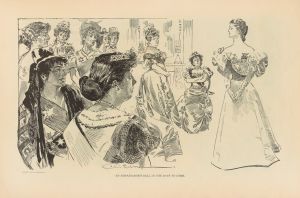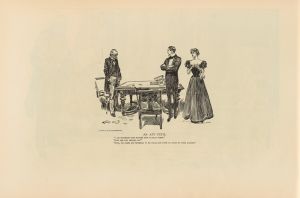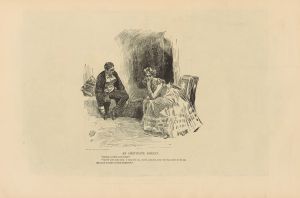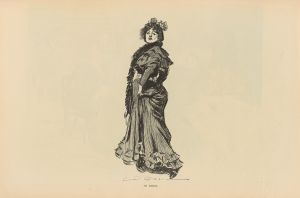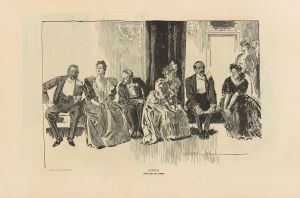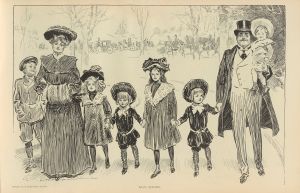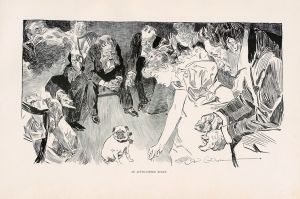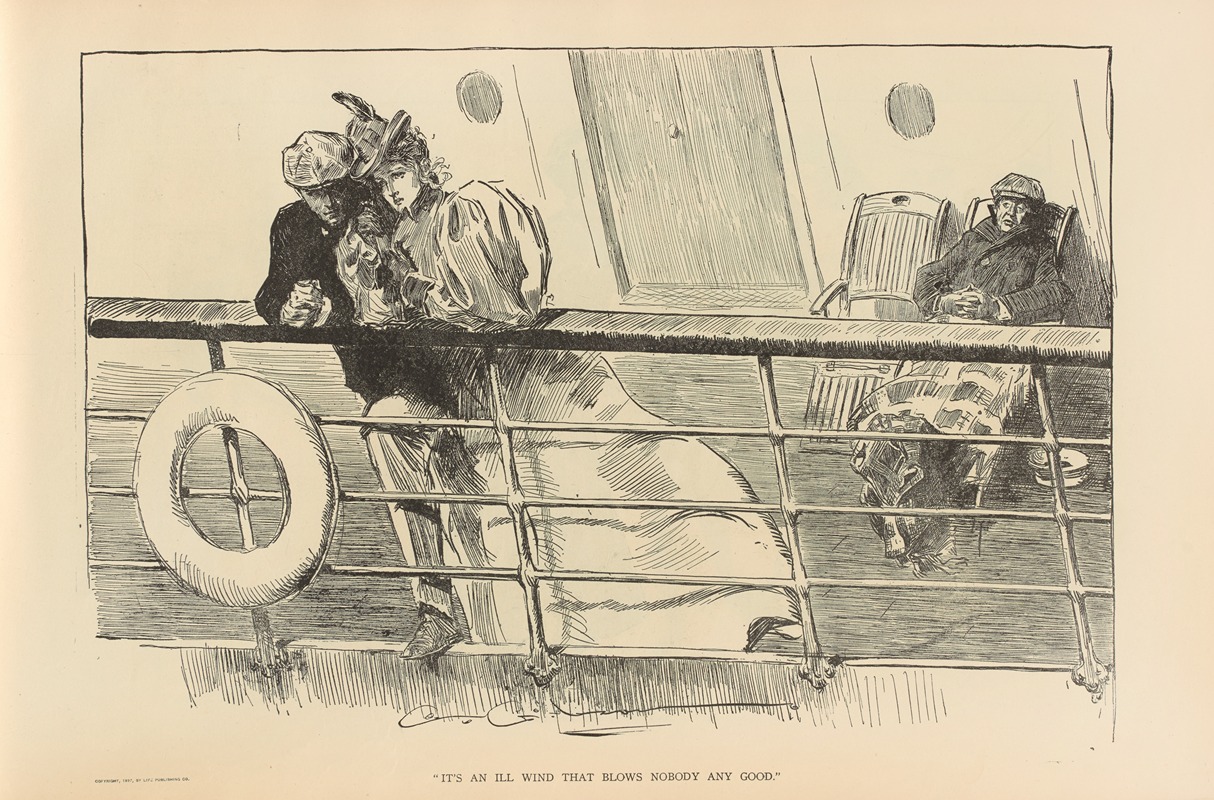
‘It’s an ill wind that blows nobody any good’
A hand-painted replica of Charles Dana Gibson’s masterpiece ‘It’s an ill wind that blows nobody any good’, meticulously crafted by professional artists to capture the true essence of the original. Each piece is created with museum-quality canvas and rare mineral pigments, carefully painted by experienced artists with delicate brushstrokes and rich, layered colors to perfectly recreate the texture of the original artwork. Unlike machine-printed reproductions, this hand-painted version brings the painting to life, infused with the artist’s emotions and skill in every stroke. Whether for personal collection or home decoration, it instantly elevates the artistic atmosphere of any space.
Charles Dana Gibson was a prominent American illustrator, best known for his creation of the "Gibson Girl," an iconic representation of the American woman at the turn of the 20th century. Among his numerous works, the illustration titled "It’s an ill wind that blows nobody any good" stands out as a notable piece, though specific details about this particular illustration are not as widely documented as some of his other works.
Gibson's career flourished during the late 19th and early 20th centuries, a period when illustrated magazines were a primary source of entertainment and information for the public. His illustrations were featured in popular publications such as Life, Scribner's, and Collier's Weekly. The "Gibson Girl" became a cultural phenomenon, embodying the idealized image of beauty, independence, and confidence in women during that era.
The phrase "It’s an ill wind that blows nobody any good" is a proverbial expression, suggesting that even adverse situations may benefit someone. This theme is consistent with Gibson's often satirical and insightful approach to social commentary through his art. While specific details about the illustration itself are scarce, it can be inferred that Gibson employed his characteristic style, which combined elegance with a keen observation of societal norms and behaviors.
Gibson's illustrations often depicted scenes of social interaction, capturing the nuances of relationships and the subtleties of human expression. His work was characterized by clean lines, attention to detail, and a sense of humor that resonated with the public. The popularity of his illustrations contributed significantly to the visual culture of the time and influenced subsequent generations of artists.
Despite the lack of detailed information about "It’s an ill wind that blows nobody any good," Gibson's legacy as an illustrator is well-documented. His ability to capture the spirit of his time and comment on social issues through art has left a lasting impact on American illustration. His work remains a subject of study for those interested in the intersection of art, culture, and history.
In summary, while specific details about the illustration "It’s an ill wind that blows nobody any good" are limited, Charles Dana Gibson's broader body of work provides context for understanding his artistic approach and cultural significance. His illustrations continue to be appreciated for their artistic merit and their reflection of early 20th-century American society.









